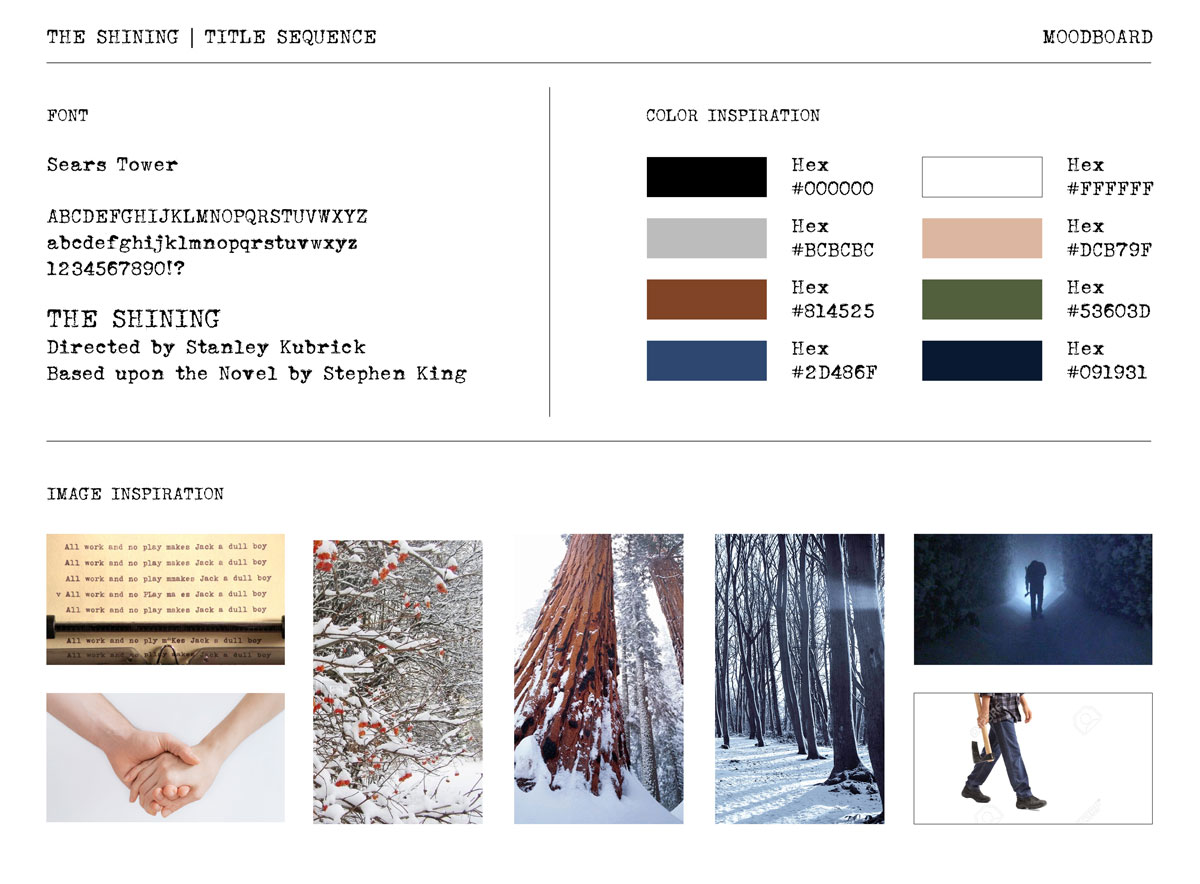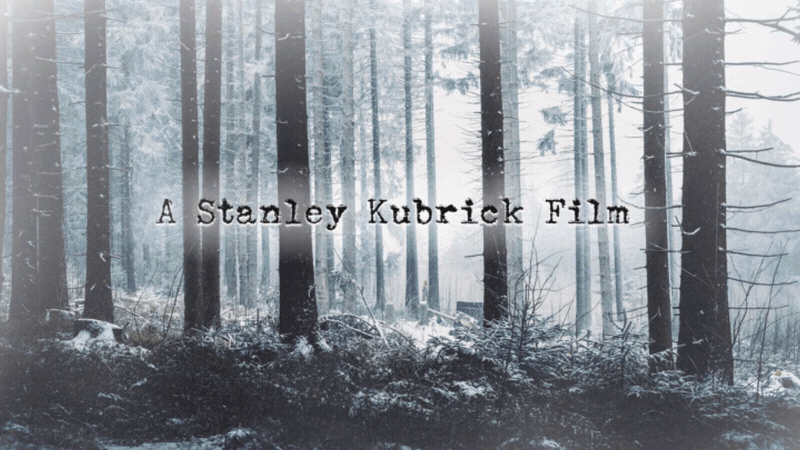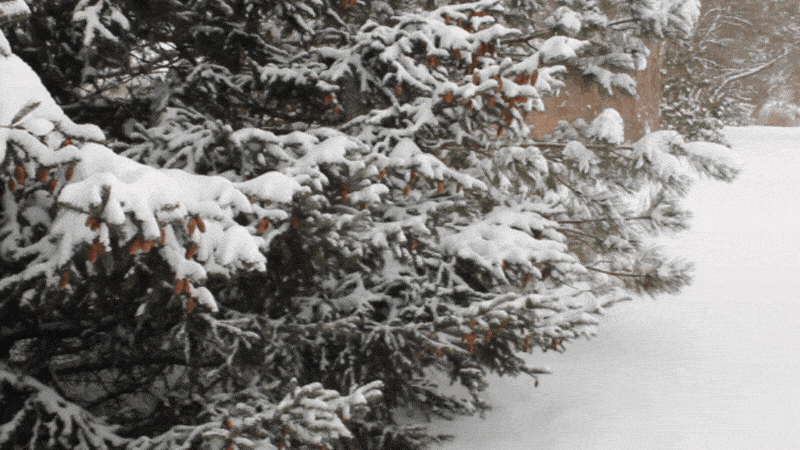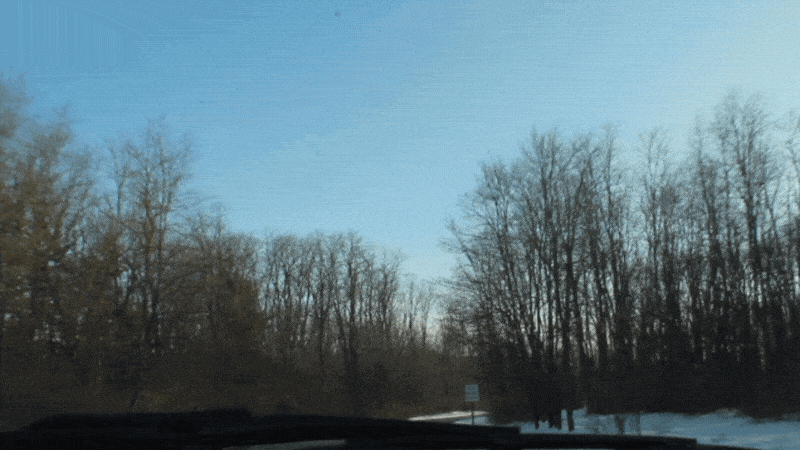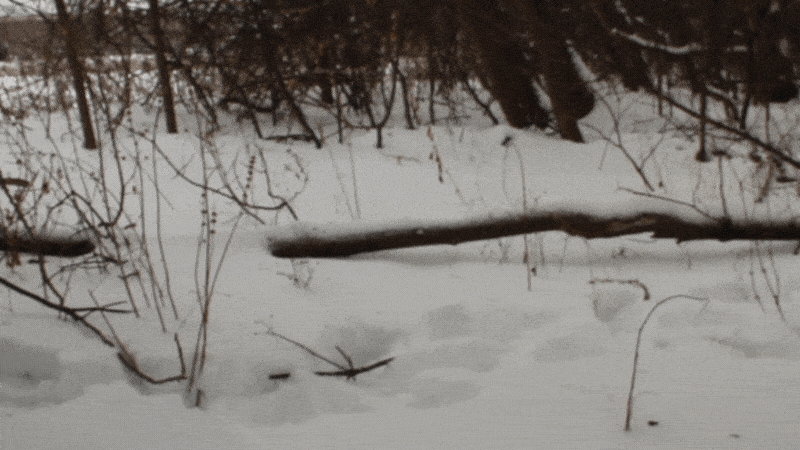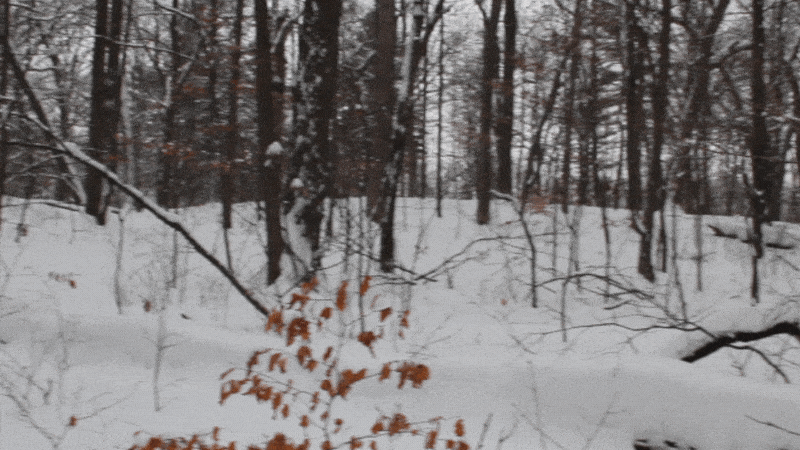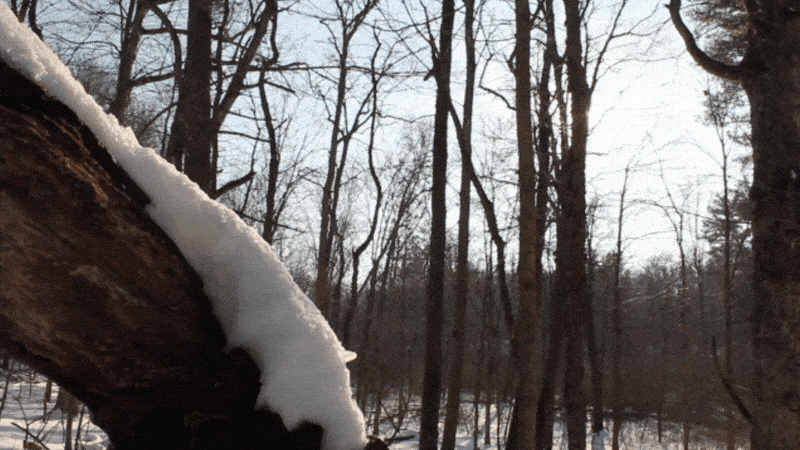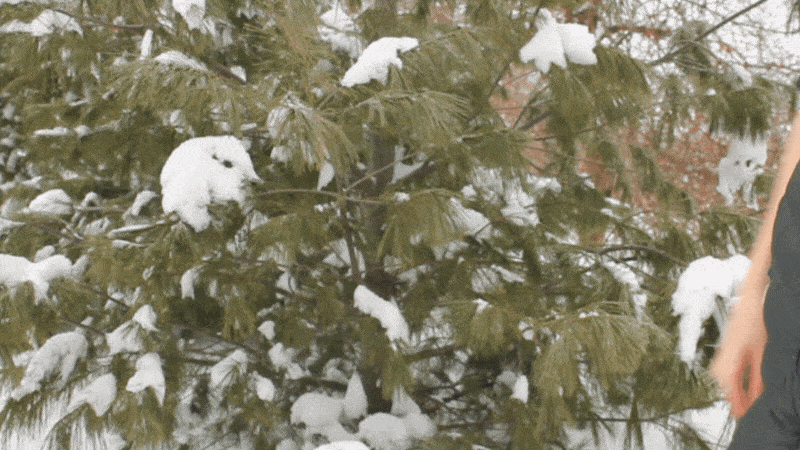Luckily this project was presented around the winter months. After a heavy snowfall overnight, I took the opportunity to film at the local metro park and in my parents' backyard. Starting with getting the shots that featured people. I directed the subjects moving around the snowscape with the focus being on the body language. I purposefully kept their faces out of the shot as Jack Nicholson's facial reactions are a large focal point in the film and I wanted to contrast this with body language. Having a foreboding, menacing posture with an axe reflects Nicholson's malicious expressions on his face, not to mention the viewer doesn't know what will happen to his character at the end of the movie and this technique keeps his identity hidden.
Capturing the environmental shots wasn't as meticulous. I captured a range of shots playing with depth of field and panning movements with the camera using both a tripod and hand-held shooting. I made sure to keep the movements slow to medium pace to make the mood match. Some of the hand-held shots added a small amount of movement to add to the urgency and stress at the end of the sequence. After selecting which takes to use for the video came animating the credits.
I took a simple approach when animating the credits, predominantly choosing to fade in and out the text for most of the frames so that the credits never fully took away from the backgrounds and subjects in the shots. A couple of exceptions were Nicholson and Duvall's credits as I had them being revealed when the camera pans right. To add more dimension to the text, outer glow and drop shadow layer effects were added. The drop shadow is a solid white backdrop to help with readability. The outer glow is a transparent white that flickers to increase the sense of uneasiness with the words.
Sound design was kept simple, only having the piano track of the original Shining opening theme, nature sounds, and chanting. Opening the video are nature sounds, which slowly fade away as the video continues. Closely following the nature sounds is the piano playing The Shining theme, timing the transitions to the piano keys. Chanting starts to be heard when you first catch sight of a man holding an axe, growing in volume the more he appears. At the climax of the video, you get a burst of voices which then gets cut off as the axe comes down into the frame.
